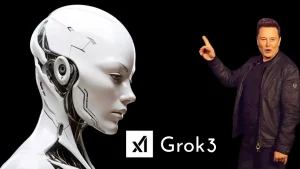Artificial Intelligence (AI) has rapidly become a core component of modern productivity, transforming how individuals and organizations manage daily tasks. Microsoft has emerged as a leading force in this transformation through its advanced AI-powered tools—Microsoft Copilot and Copilot in Edge.
While both tools share the same foundational technology and branding, they are designed for distinct purposes. Microsoft Copilot functions as an integrated AI assistant across Microsoft 365 and Windows, helping users streamline tasks such as document creation, data analysis, and workflow automation. Copilot in Edge, on the other hand, is a browser-based AI companion built into Microsoft Edge, focused on enhancing web-related productivity through contextual understanding, summarization, and content generation.
This feature-by-feature breakdown explores the key differences, similarities, and use cases of Microsoft Copilot and Copilot in Edge—covering everything from integration and functionality to pricing, privacy, and user experience—to help you understand how each tool fits into Microsoft’s broader AI ecosystem.
What Is Microsoft Copilot?
Microsoft Copilot is a powerful AI assistant embedded across Windows 11, Microsoft 365 (Word, Excel, PowerPoint, Outlook, Teams), and other services. It leverages the combined strength of OpenAI’s GPT models and Microsoft Graph to deliver intelligent insights, automate workflows, and boost productivity.
For example, within Word, Copilot can instantly draft or rewrite sections of text based on your prompts. In Excel, it can analyze large datasets and even generate complex formulas automatically. In PowerPoint, it can create visually appealing slides from a simple outline or document.
Browser-based AI assistants, Microsoft Copilot has deep access to your organizational or personal data (when permissions are granted), allowing it to understand your ongoing projects and offer contextual, multi-app support. This makes it a robust choice for professionals, students, developers, and business teams seeking comprehensive AI assistance.
What Is Copilot in Edge?
Copilot in Edge is Microsoft’s web-integrated version of its AI assistant, built directly into the Microsoft Edge browser sidebar. It’s designed to enhance your browsing experience with real-time AI assistance.
When you open a webpage, Copilot in Edge can summarize the content, generate key takeaways, answer questions, or help rewrite sections of text. It’s ideal for users who spend much of their time researching, reading articles, comparing products, or drafting emails online.
Microsoft Copilot, which spans multiple apps, Copilot in Edge is confined to your browsing environment. However, it shines in contextual web understanding—recognizing what’s on your screen and tailoring its responses accordingly. This makes it a fast, lightweight, and incredibly convenient tool for everyday browsing tasks.
Feature-by-Feature Comparison
1. Core AI and Chat Capabilities
Both Microsoft Copilot and Copilot in Edge are powered by advanced large language models, but their focus areas differ.
- Microsoft Copilot provides a broad AI experience across multiple applications. It’s designed to handle professional-grade tasks like generating reports, summarizing meeting notes, creating data visualizations, and drafting content inside Microsoft 365.
- Copilot in Edge, in contrast, focuses on browser-specific functions such as summarizing articles, generating content snippets, and quickly finding online answers. It’s like having ChatGPT integrated directly into your browser, but with Microsoft’s added contextual intelligence.
In essence, Microsoft Copilot is ideal for structured work tasks, while Copilot in Edge excels in fast, web-based interactions.
2. Integration and Ecosystem Access
This is where the biggest difference lies.
- Microsoft Copilot is built to integrate deeply with Microsoft’s ecosystem—Windows, Microsoft 365 apps, Teams, and Outlook. It can access your files, emails, and calendar events via Microsoft Graph (with consent) to deliver personalized assistance. For instance, it can generate a project summary based on your Teams discussions and related Word documents.
- Copilot in Edge, however, stays within the browser. It interacts with your open tabs and web content, providing suggestions, summaries, or answers relevant to your browsing activity.
If you live within the Microsoft suite daily, Microsoft Copilot is your go-to. But if your work revolves around online research or multitasking across websites, Copilot in Edge offers a more streamlined experience.
3. Contextual Awareness and Task Automation
Microsoft Copilot demonstrates a higher level of contextual intelligence because it can “see” across different applications. For instance, if you ask it to “summarize last week’s meetings,” it can pull data from Teams and Outlook automatically. It’s also capable of automating workflows—like creating follow-up tasks, scheduling events, or drafting responses based on previous communications.
Copilot in Edge, meanwhile, is exceptional in real-time content awareness. It can analyze the page you’re reading, summarize long articles, compare products, or help you understand complex topics instantly. It’s perfect for students, researchers, or content writers who need quick context without switching tabs.
4. User Experience and Accessibility
Both Copilots are easy to access but differ in design philosophy.
- Copilot in Edge sits neatly on the right-hand sidebar of the Microsoft Edge browser. It’s instantly available with a single click, providing quick summaries and answers without disrupting your workflow.
- Microsoft Copilot, on the other hand, is accessible via Windows 11 (as a system assistant), through the Microsoft 365 apps, or via the web portal. It’s more feature-rich but requires deeper setup and familiarity with Microsoft’s ecosystem.
In summary: Copilot in Edge offers speed and convenience, while Microsoft Copilot delivers power and depth.
5. Privacy, Permissions, and Data Handling
When it comes to AI, privacy and data security are key concerns—and Microsoft addresses both responsibly.
- Microsoft Copilot uses enterprise-grade security via Microsoft Graph and adheres to strict compliance standards (including GDPR and ISO certifications). It ensures that your personal or organizational data stays within your Microsoft environment and is not shared with external AI systems.
- Copilot in Edge focuses on browser-based operations. It can access page content temporarily for context but doesn’t store or transmit your personal data for training purposes.
For enterprises, Microsoft Copilot offers more robust data governance. For individuals, Copilot in Edge is lightweight and privacy-friendly.
6. Pricing, Availability, and Licensing
Here’s where the two products differ most in accessibility.
- Microsoft Copilot is available primarily through Microsoft 365 business and enterprise plans. The pricing typically starts at $30 per user/month, making it more suited for professional or enterprise users seeking full integration.
- Copilot in Edge, on the other hand, is completely free. Anyone with the Microsoft Edge browser and a Microsoft account can access it instantly, making it a perfect entry point for users exploring AI for the first time.
In short, Edge Copilot is ideal for casual users, while Microsoft Copilot is designed for business productivity at scale.
7. Unique Strengths and Limitations
| Feature | Microsoft Copilot | Copilot in Edge |
|---|---|---|
| Ecosystem | Deep Microsoft 365 and Windows integration | Built into Edge browser |
| Ideal Users | Professionals, enterprises, developers | Web users, students, researchers |
| Pricing | Paid (Microsoft 365 subscription) | Free |
| Context Awareness | Full document, app, and data-level context | Web page and browsing-level context |
| Accessibility | Multi-device and app integration | Browser-based access only |
Microsoft Copilot offers advanced, enterprise-grade functionality, while Copilot in Edge focuses on simplicity and speed for general users.
Both are designed to complement each other—Microsoft Copilot for in-depth work automation, and Copilot in Edge for browsing intelligence.
Using both together creates a seamless AI-powered environment—Edge Copilot handles my research and web tasks, while Microsoft Copilot automates my report writing and data analysis.
FAQs
1. What’s the main difference between Microsoft Copilot and Copilot in Edge?
Microsoft Copilot is integrated across Windows and Microsoft 365 apps like Word, Excel, and Teams, while Copilot in Edge works within the Edge browser to assist with web-based tasks like summarizing pages or generating content.
2. Can I use both Copilots together?
Yes. You can use Microsoft Copilot for work and productivity tasks, and Copilot in Edge for quick browsing help, research, and content generation.
3. Is Copilot in Edge free to use?
Yes. Copilot in Edge is built into the Microsoft Edge browser and is available at no extra cost for all users.
4. Does Microsoft Copilot require a subscription?
Yes. Microsoft Copilot is part of Microsoft 365’s paid plans, typically available for business or enterprise users starting around $30 per month.
5. Which Copilot is best for students or freelancers?
Copilot in Edge is ideal for students and freelancers since it’s free, easy to use, and focused on web-based productivity and content tasks.
6. How does privacy differ between the two?
Microsoft Copilot accesses organization data securely through Microsoft Graph, while Copilot in Edge only uses browser page content for context and doesn’t store personal data.
7. Can Copilot in Edge work on other browsers like Chrome?
No. Copilot in Edge is exclusive to the Microsoft Edge browser and isn’t available on Chrome, Firefox, or Safari.
8. Which one offers more integration with Microsoft apps?
Microsoft Copilot offers deeper integration with Microsoft 365 tools, including Word, Excel, PowerPoint, Outlook, and Teams, making it better for professionals and enterprise users.
9. Do both versions use the same AI model?
Yes. Both are powered by Microsoft’s AI and OpenAI’s GPT models but optimized differently—Copilot in Edge for browsing and Microsoft Copilot for productivity apps.
10. Which version should I choose for everyday use?
If most of your work is within Microsoft 365, go for Microsoft Copilot. If you primarily browse, research, or write online, Copilot in Edge is the better fit.




